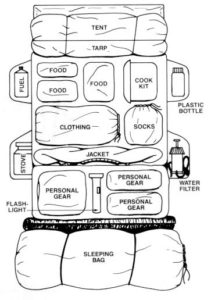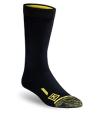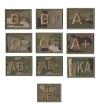There’s no doubt about it, camping is hard work. Organizing gear, taking the right equipment, preparing food for several days ahead and making sure there is enough to do to entertain the whole family—it can easily overwhelm. But it’s worth it! You’re guaranteed to make lasting memories, enjoy lots of laughs with the family, and get plenty of outdoor time.
What to pack
Preparation is essential for any outdoor adventure. Having the necessary supplies and equipment can make a difference in your overall enjoyment and experience. Checklists are a great tool to help with your organization. Your camping list will vary according to the type of camping and activities you have planned, the places you are going, the time of year and the len gth of your trip.
gth of your trip.
To help you get out under the stars, we’ve put together some tips for camping with the family and a camping checklist of what is essential to take. The list to the right shows our recommendations of what should be taken on a camping adventure. Add or remove items to suit your individual needs.
How to pack the camping bag
While many campers just throw their gear into their packs with no organization the day before their trip, there is a method in packing a backpack properly for convenience and to improve comfort. Learning to organize your gear properly before loading your backpack will eliminate forgotten items and help you remove unnecessary luxuries. In addition, efficiently packing your backpack will give you more comfort, convenience and stability. Lightweight items should be packed at the bottom of the backpack first, the sleeping bag usually goes in first along with other light night time supplies. After, pack medium -weight items, followed by heavy gear. The diagram shows the best way to arrange your items.
-weight items, followed by heavy gear. The diagram shows the best way to arrange your items.
When packing your backpack, be sure to fill in all empty space with small or compressible items. For example, you can stuff a shirt inside a pot, put a roll of duct tape around your hiking poles, or remove your sleeping bag from its sack and stuff it around other gear.
Certain items like a GPS, insect repellent, snack food, rain-wear, or a headlamp may need to be accessed at any time. Because of this, these essential things should be stored inside a front pocket, top lid, or in the top of the main compartment so they can be found with minimum searching.
After your bag is loaded and packed, tighten all compression straps to limit load-shifting while hiking.
How to pack food for camping
Camping is such an idyllic way to connect with nature, but with it comes the fact that you have to bring everything you're eating and drinking in with you, not to mention
the tools and equipment to prepare and serve it with. After you've mastered the basics of planning and packing for car camping, here are a couple of tips to help you successfully plan and pack for cooking once you get there!
It’s really important to ensure that food is stored correctly as improper food storage can lead to spoilage or attract dangerous animals such as bears. The pictures below show the basic do’s and don’ts of safely storing food.















